Text

Holocaust survivors, although few in number as of recent, tell stories of great importance. In the the past decade or so, there has been a push to document their stories, so they could serve as witnesses for one the greatest crimes committed against humanity. Holocaust deniers exist in modern day, and it is important that the stories of the survivors are told, to prevent such a thing from happening again. We must never forget the Holocaust, and the evil lows humanity sunk to. We must study the past, lest history repeat itself.
0 notes
Text
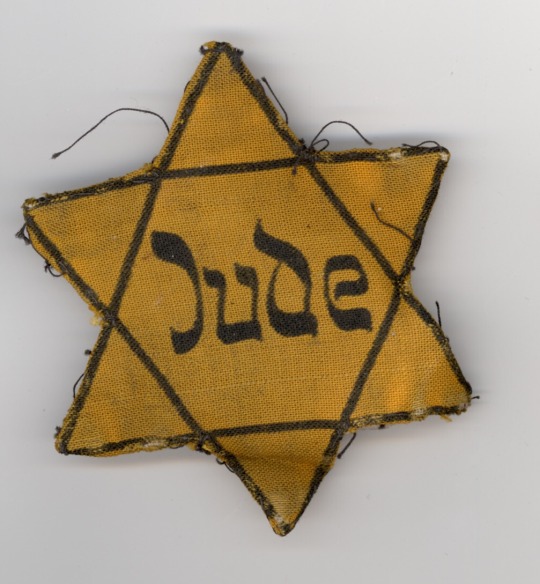
Jewish people were forced to identify themselves by wearing yellow badges with the German word “Jude,” written on it. If Jews were seen without one, they would be punished severely. These badges alienated the Jews from the rest of Germany’s population, othering them. These badges were sown onto the majority of Jewish peoples clothing. There were some instances where Jews did not wear these badges, such is the case with Jews in Denmark. King Christian X of Denmark said he would don the star himself if the Nazis forced the Jews to do so. The Star of David insignia being forced upon the Jews helps one the understand how hard the Nazis tried to separate Jews from non-Jews, and dehumanize them.
Arsenault, Joshua, editor. "Holocaust Badges." Holocaust Memorial Center.
Accessed 31 May 2020.
0 notes
Text

Concentration Camps were the most common ways Jews were imprisoned and killed during the Holocaust. This photo is of Auschwitz, the most notorious death camp of all. It is located in Poland, and was liberated by the Soviet-Union in 1945. 1.3 million were sent here, and 1.1 died here. The gas chambers and crematorium were constantly running, and around 6,000 Jews were killed a day. Auschwitz remains standing to this day, as a constant reminder, “Never Again”.
Schreiber, Markus, and Kirsten Grieshaber. "Auschwitz, 75 Years after Its
Liberation." AP News, 21 Jan. 2020 Accessed 31 May 2020.
0 notes
Text

This is a drawing by Helga Weissova, who was 14 years old at the time. It shows women preparing their dorm before an inspection by the Red Cross. These inspections were to see if the people in the camp were being treated humanly. The Nazis running the camp would force the prisoners to act as though nothing out of the ordinary was happening, and only showed the Red Cross prisoners who appeared healthy. Such drawings offer the viewer some insight into what life in the Concentration Camps was like for young children, and how they portrayed their surroundings. The vast majority of children in these camps died, leaving only their drawings to tell their story.
Long, Chris. "'Haunting' art by Jewish children in WW2 concentration camp."
BBC, 4 Apr. 2014 Accessed 31 May 2020.
1 note
·
View note
Text
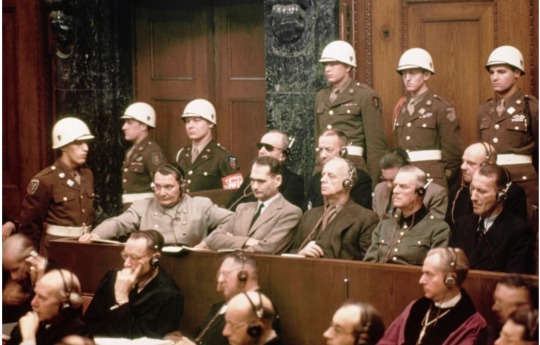
The Nuremberg Trials, which occurred in Nuremberg, Germany, from November 1945 to October 1946, were trials which convicted 166 Nazis of war crimes and crimes against humanity. Although several high ranking Nazi officials, including Hitler himself, committed suicide to avoid capture, 199 were arrested by Allied forces. A common theme during the trials was to admit that they committed the act they were accused of, but to deflect blame. A common defense was that they were “just following orders”. 12 of the defendants were sentenced to death, while the rest were given prison sentences ranging from 10 years to life in prison. The denial of responsibility was likely a mechanism developed by the Nazis, which allowed them to shift the crushing guilt, or more than likely, blame, to someone else. Most of the defendants wanted the court to believe they had no free will, and that all the blame lay on Hitler for telling them to commit these atrocious actions. The Nuremberg Trials demonstrate how the people most responsible for The Holocaust were able to deny responsibility, even when faced with undeniable evidence of their own wrongdoings.
"The Nuremberg Trials." United States Holocaust Memorial Museum. Accessed 30 May
2020
0 notes
Text
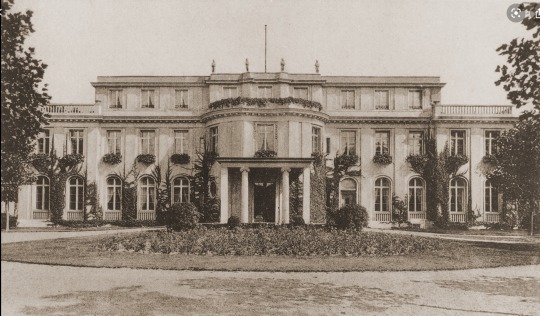
This building housed the Wannsee Conference, a meeting which was called to address a “Solution to the Jewish Problem”. In January of 1942, 15 high ranking Nazis attended this meeting, including the likes of Heinrich Himmler and Adolf Eichmann. During the conference, top ranking officials came up with the plan on how to kill all the Jews most effectively. This meeting lead to the construction of the gas chambers, changing the already inhumane work camps into death camps, to which millions were sent to die.
"Wannsee Conference." Encyclopaedia Britannica. Accessed 30 May 2020.
0 notes
Text
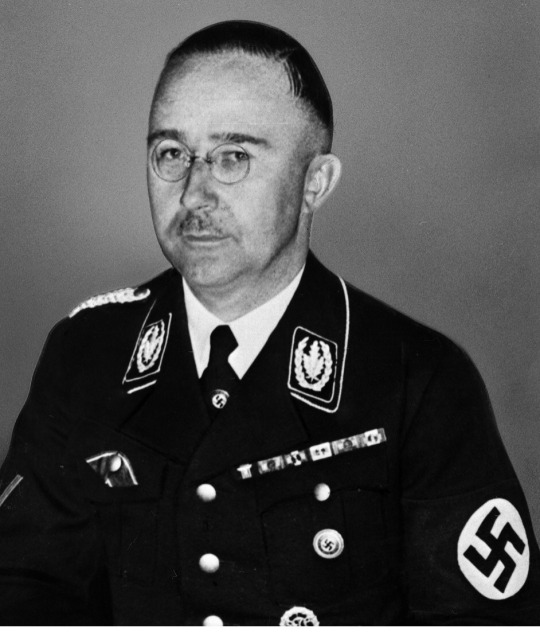
Pictured here is Heinrich Himmler, one of the highest ranking Nazi officials, and a major figure in the creation The Final Solution. Heinrich had been loyal to Hitler since the beginning, taking part in Hitler’s earlier acts of rebellion against the government, like the Beer Hall Putsche of 1923. Eventually, Heinrich was given the rank of Reichsfuhrer, the second highest rank in all of Nazi Germany. He was given control over the brutal Schutzstaffel, better known as the S.S. This group was responsible for the running of concentration camps, and the execution of Jews. He also had an instrumental role in leading the Gestapo, Nazi Germany’s secret police, responsible for hunting down those seen as enemies to the state. Without men like Heinrich Himmler, the Holocaust wouldn’t have occurred.
"Heinrich Himmler." Encyclopaedia Britannica, 20 July 1998. Accessed 30 May
2020.
0 notes
Text

Nazis would often transport their victims by train to concentration camps. Pictured here is a large group of Hungarian Jews arriving at Auschwitz , a notorious death camp which was located in Poland. Jews, and others who Hitler deemed undesirable, would be locked in these cattle cars, often for days on end with little to no food or water. The Jews would often enter these trains at Ghettos, after being forced out of their homes. Whe the new arrivals got off the train, it was common for them to be sorted. Men would stand outside the train, stalking their victims like the angel of death itself. With a point of the finger, lives were ended, and lives were enslaved. If you were deemed unfit to work, you were immediately gassed. Millions upon millions died at these camps. If you were deemed physically capable, you were tattooed, and your head would be shaven. Concentration camps are the ultimate crime against humanity, and still remains one of the darkest points in human history.
A group of Hungarian Jews arriving at the Auschwitz-Birkenau camp in
German-occupied Poland. Accessed 30 May 2020.
Created : 05/30/20 0
0 notes
Text
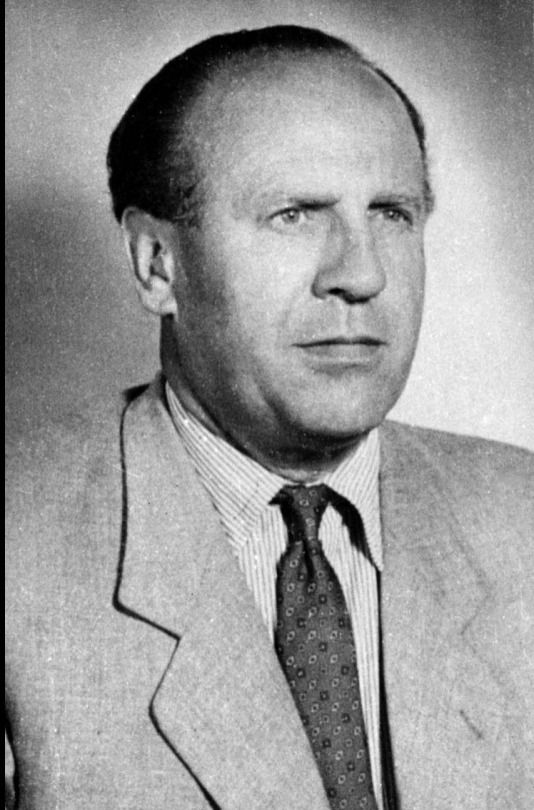
Pictured here is Oskar Schindler, a prominent business owner, who manufactured kitchenware prior to the war. Oskar stood out through his courageous efforts, in which he saved far over 1000 Jews from Auschewitz.He would “employ” Jewish workers at his factory, and provide them with protection from the Nazi’s reign of terror. Oskar is an example of an upstanding citizen who stood up against evil and used everything in his power to save as many lives as possible. He died penniless after the war, but has since become a celebrated hero, and will forever be remembered as a man who took a stand against evil.
History Staff. "Oskar Schindler—credited with saving 1,200 Jews during the
Holocaust—dies." History Reference Center, History. Accessed 29 May 2020.
0 notes
Text
First They Came: By Pastor Martin Niemoller
First they came for the Communists
And I did not speak out
Because I was not a Communist
Then they came for the Socialists
And I did not speak out
Because I was not a Socialist
Then they came for the trade unionists
And I did not speak out
Because I was not a trade unionist
Then they came for the Jews
And I did not speak out
Because I was not a Jew
Then they came for me
And there was no one left
To speak out for me
This poem exemplifies how the Holocaust was able to take place. When something terrible is happening, but doesn’t directly affect everyone, it can be difficult to stand up against evil actions. It is often far easier for one to put their head down and pretend there isn’t a problem then to face it head on. Eventually, after the Nazis take everyone, it’s too late, and there is no one left to stand up for you.
0 notes
Text
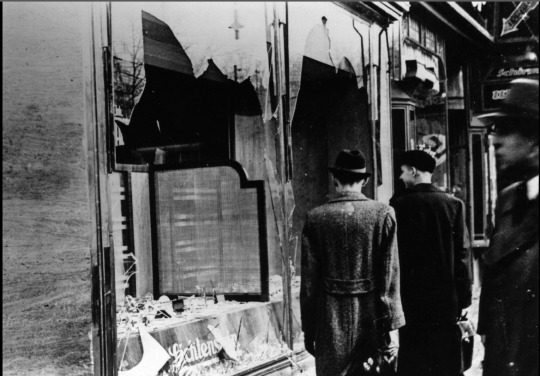
Hateful, violent acts, which were precursors to the Holocaust, were often instigated by average German citizens, who followed Hitler’s ideologies closely. Of course the brown-shirts were key players in this tragic event, but without many German citizens backing them up, Kristallnacht, or the night of the broken glass, would not have played out on quite the scale, Kristallnacht was a night of violence and malice, mainly directed towards the Jewish people, their stores, places of worship, and their homes. It took place on the night of November 10th, 1938. Police stood by while looters and rioters smashed and burnt everything they perceived as “Non-German.” The German government offered the people a chance to let loose and attack the Jews, and many German citizens gladly accepted this odious offer.
Fulbrook, Mary. "Jewish Germans Had Their Lives Destroyed by Nazis During
Kristallnacht. Their Neighbors Let It Happen." Time, 9 Nov. 2018 Accessed
24 May 2020.
0 notes
Text
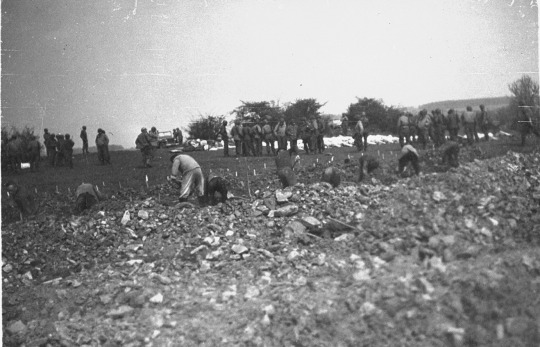
Often, Concentration Camps were built near towns or cities. Many people living in these areas chose to ignore the atrocities occuring in their backyards. When the war ended, and the camps were liberated, the Allies forced some of the people living nearby to dig graves for the dead. The people who lived near the camps, and did nothing to resist it, enabled the Nazis to see their gruesome plans through till the end. As long as what the Nazis were partaking in didn’t affect their daily lives, they were perfectly fine with the murder of millions.
Zullinger, Llewellyn. German civilians conscripted from nearby towns dig graves.
4 Apr. 1945. United States Holocaust Memorial Museum. Accessed 20 May 2020.
0 notes
Text
The Holocaust represents humanity’s ability to ignore atrocities being committed on a massive scale
0 notes